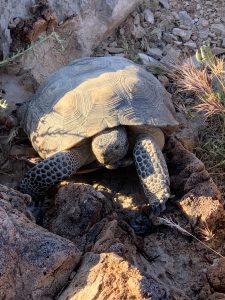
Research continues to shed light on the fascinating world of desert tortoise biology, and a recent study offers important insight into the genetic differences between two closely-related desert tortoise species: the Mojave Desert tortoise (Gopherus agassizii) and the Sonoran Desert tortoise (Gopherus morafkai).
In a collaborative effort, researchers from Arizona State University (ASU) and the University of Alabama at Birmingham (UAB) conducted a comparative genetic analysis to better understand how these species have evolved to survive in their respective ecoregions. The findings help explain why Mojave tortoises may be more vulnerable to certain environmental stressors than their Sonoran counterparts, and highlight the importance of tailoring conservation strategies to the unique needs of each species.
Why Compare Mojave and Sonoran Tortoises?
Though both species live in arid regions of the American southwest, the Mojave and Sonoran deserts differ significantly in climate, seasonal rainfall patterns, and vegetation. Over time, these differences have led to distinct evolutionary pressures—and as this study shows, they’ve resulted in measurable genetic differences between the tortoise populations that call each desert region home.
Key Takeaways from the Study
The study looked at genes related to circadian and circannual rhythms (which govern daily and seasonal biological cycles), stress response, and immune function. Here are a few major findings:
- Chronobiology and Adaptation: Mojave tortoises have developed specialized genes to regulate their biological clocks; an essential survival tool in a desert defined by extreme heat and long droughts. These adaptations likely help them time their activity, reproduction, and dormancy to optimize survival in harsh conditions.
- Stress and Disease Vulnerability: Compared to the Sonoran tortoise, Mojave tortoises have fewer genetic tools to manage environmental stressors. Most notably, the study found that Mojave tortoises have fewer functional mucin genes—key components of mucus production that help protect against upper respiratory tract disease (URTD). This could help explain why URTD is a significant health threat in Mojave populations.
- Environmental Resilience: Sonoran tortoises, on the other hand, seem to possess a broader array of genetic adaptations that may give them an edge in resisting dehydration and disease. Their environment, while still arid, tends to be more forgiving than the extreme Mojave, which may have allowed them to retain or develop more diverse stress-response genes.
Why It Matters
Understanding the genetic underpinnings of how these tortoises cope with desert life is more than just an academic exercise, it has real-world implications for threatened species management and conservation. By identifying genetic vulnerabilities, researchers and wildlife managers can better monitor tortoise health, predict population trends under climate change, and develop more targeted protection efforts.